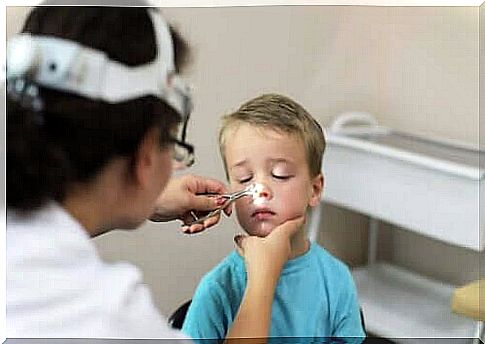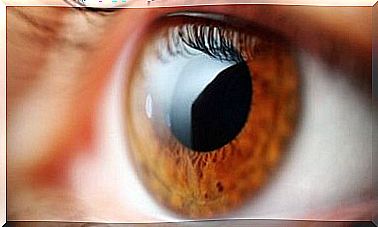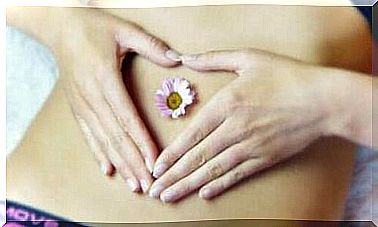Symptoms And Treatment Of Adenoiditis In Babies

Adenoiditis is a disease characterized by an inflammation the size of the adenoids (lots of lymph tissue close to the nostrils) in terms of the size of babies’ nasal cavity. It causes nasal congestion among other complications. The primary cause is an infectious episode according to pediatric sources.
Adenoiditis has characteristic symptoms and is relatively common in babies. Nevertheless, it is essential to know when to go to a doctor for possible treatment when one suspects this disorder. Read on to find out more about it.
Who is susceptible to getting adenoiditis?
Before we dive into the subject, we will look at the population group that is most likely to suffer from this disorder. The various medical examinations provide the following data:
- The incidence of adenoiditis in infants is difficult to quantify as it is usually associated with other clinical pictures such as sinusitis.
- The highest morbidity (probability of getting the disease) is, according to scientific studies, between the ages of one and nine years.
- The adenoid tissues begin to shrink from the age of six or seven and continue to shrink in size until puberty. That is why it is a characteristic disease in babies and young children.
As you can see, it is a disorder that depends on the person’s age. Adenoiditis is not one of the primary causes when adults experience clogged noses.

Characteristics of adenoiditis
As we have mentioned above, this disorder manifests itself as swelling of the adenoid tissues that sit just behind the nose and are part of the lymphatic system. This structure responds to infections by trapping bacteria so that they do not penetrate into the upper respiratory tract.
The adenoids are functional in babies and children, but according to the sources mentioned above, they reach their maximum size around the age of seven. Then they begin to shrink until they almost disappear when a child reaches adulthood. This is because we develop new immune mechanisms as we age.
We must emphasize the difference between acute and chronic adenoiditis – although this concept does not seem to be standardized by all bibliographic sources. Adenoid tissue appears to become temporarily inflamed during a period of infection, which can be expected. However, if the adenoids become inflamed, the clinical picture may become chronic.
The US National Library of Medicine reports that infections are the most common causes of acute adenoiditis. However, allergic processes or irritation from stomach acid can play an important role. The bacteria typically associated with this clinical picture are:
- Haemophilus influenza.
- Streptococcal pneumoniae.
- Streptococcal pyogenes.
- Staphylococcus aureus.
Lastly, you should note that recurrent adenoiditis leads to enlargement of the adenoids. In this case, surgical removal of the tissue may be necessary as it will not shrink again after the infection.
Symptoms in babies
Pediatric portals such as Kidshealth mention the symptoms of this disease in both babies and children. Some of the most common symptoms are:
- Dry mouth and bad breath.
- Cracked lips.
- Discharge from the nose.
- Ear problems.
- Loud breathing.
- Recurrent infections of the nose or sinuses.
All of these symptoms are due to the inability of the newborn to breathe properly. Swollen tissue causes air to flow into the upper airways so that the baby begins to breathe through its mouth.
Treatment of adenoiditis in infants
The primary treatment for adenoiditis in babies is to wait and see. There is no need to give antibiotics to a newborn with an allergic reaction. Note that it is not an option to diagnose the patient yourself. One should go to a pediatrician so they can make various reservations:
- Viral infections usually do not require any treatment. In fact, this type of upper respiratory tract disease usually resolves on its own after five to seven days, according to some scientific sources.
- Some bacterial infections require antibiotics. For example, Amoxicillin is one of the most widely used drugs and usually leads to improvement within 48 to 72 hours.
- Nasal sprays or antihistamines are what you can try if you suspect an allergic reaction.
- Changes in the child’s diet and advice from a pediatrician should be enough to relieve symptoms such as heartburn and acid regurgitation.
If the patient does not respond to treatment and continues to have breathing problems that lower their quality of life, the adenoids may need to be removed. This surgical process poses no risk to most children.

The role of paediatricians
It is a common disorder that is often associated with other pathological processes in the upper respiratory tract. Therefore, talk to a pediatrician if your baby has trouble breathing, bad breath, dry mouth, crying and persistent discomfort.
In addition, note that episodes caused by bacterial infections can also manifest with malaise and fever. This is why you should talk to a doctor if you notice any of these symptoms.









